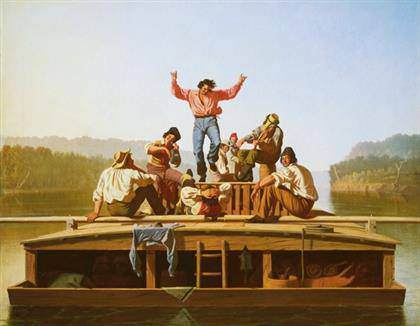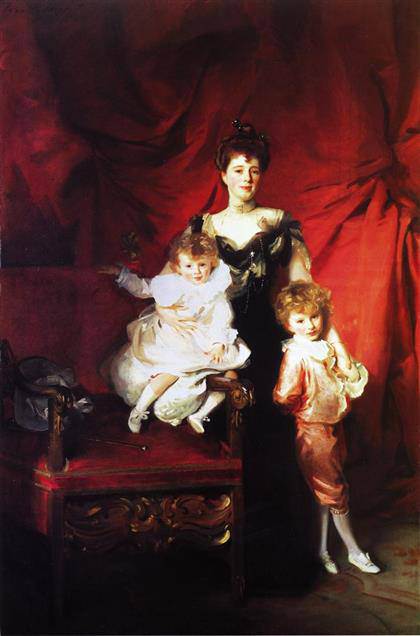
George Caleb Bingham, American (1811 – 1879)
The Jolly Flatboatmen, 1846
oil on canvas, 96.8 x 123.2 cm (38 1/8 x 48 1/2 in.)
National Gallery of Art, Washington. Patrons’ Permanent Fund. 2015.18.1
NGA Washington buys Bingham’s ‘The Jolly Flatboatmen’ George Caleb Bingham’s masterpiece, ‘The Jolly Flatboatmen’ (1846) —considered one of the greatest American genre paintings ever made— has been acquired by the National Gallery of Art, Washington.]]>
May 29, 2015, source: National Gallery of Art, Washington
Known as “the Missouri artist,” Bingham was fascinated with American frontier life and is particularly well known for his paintings of trappers and boatmen along the Mississippi and Missouri rivers. The purchase of the painting from the collection of the Richard and Jane Manoogian Foundation was made possible by the Gallery’s Patrons’ Permanent Fund.
“The Jolly Flatboatmen” is currently on tour in the exhibition “Navigating the West: George Caleb Bingham and the River”, which began last October at the Amon Carter Museum of American Art, Fort Worth, Texas. The exhibition closed at the Saint Louis Art Museum on May 17, and travels to the Metropolitan Museum of Art from June 17 through September 20. “The Jolly Flatboatmen” will go on view in the National Gallery of Art’s West Building in October 2015.
“The Jolly Flatboatmen is among the first distinctly American paintings that capture the allure of Western expansion during the mid-19th century,” said Earl A. Powell, III, director, National Gallery of Art. “The American masterpiece has had a regular presence at the Gallery since 1956, thanks to the generosity of its past owners, the Pell family and Richard Manoogian. It joins two other outstanding paintings —”Mississippi Boatman” (1850) and “Cottage Scenery” (1845)— and two works on paper by Bingham in the Gallery’s collection.”
In “The Jolly Flatboatmen”, Bingham placed his central dancing figure at the apex of a triangular composition. On either side of the dancer, a fiddler plays a tune while another boatman keeps time on a frying pan and the rest of the men lounge on the deck as the boat floats downriver. In the foreground, Bingham included several remarkable still-life elements: a shirt drying in the sun, a coonskin, and a coiled rope. By 1846, when Bingham completed this painting, flatboats were quickly being replaced by steam-powered vessels that could haul freight at significantly faster speeds.
Related content
National Gallery of Art Washington acquires more than 6,000 artworks from the Corcoran Gallery of Art (news, February 2015)
Follow us on:


